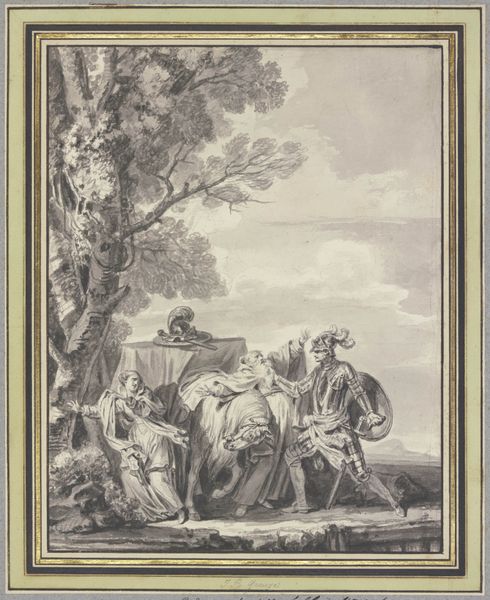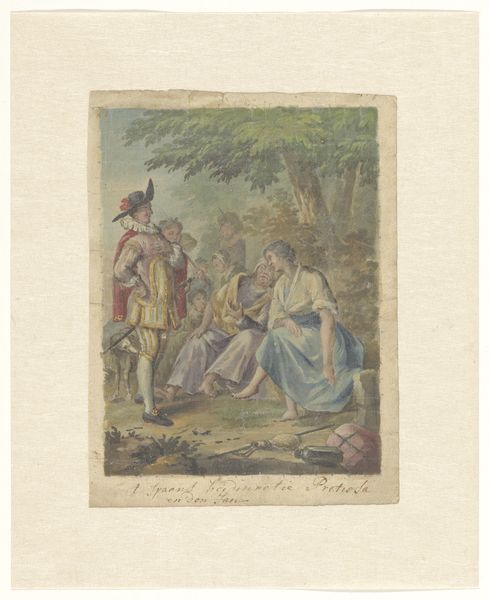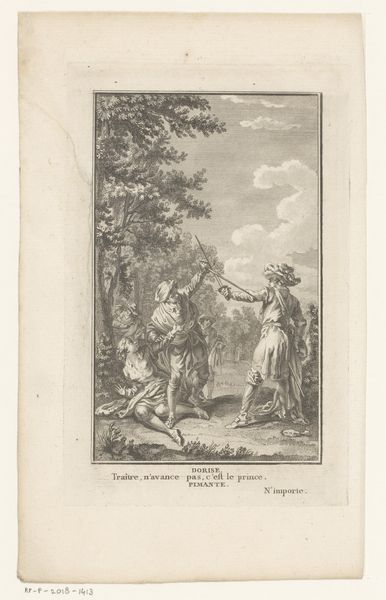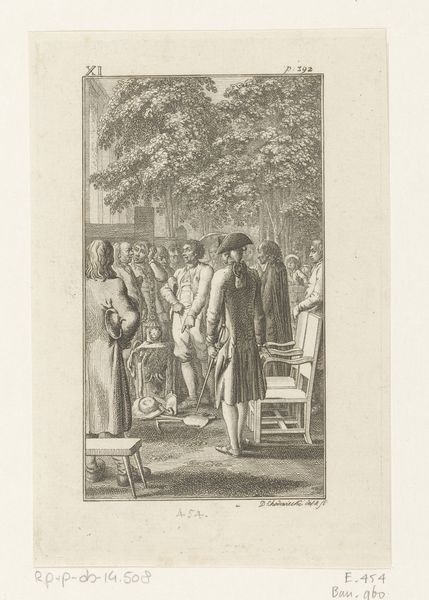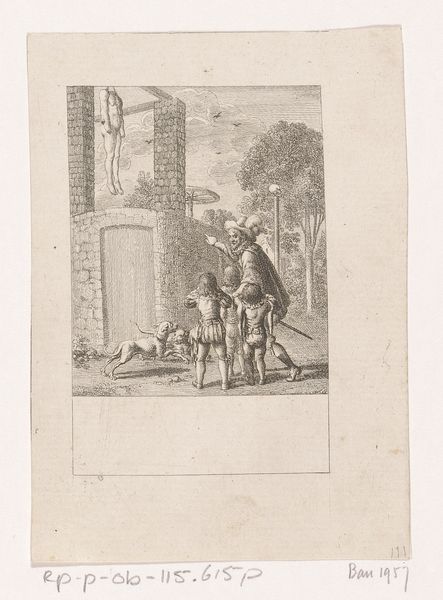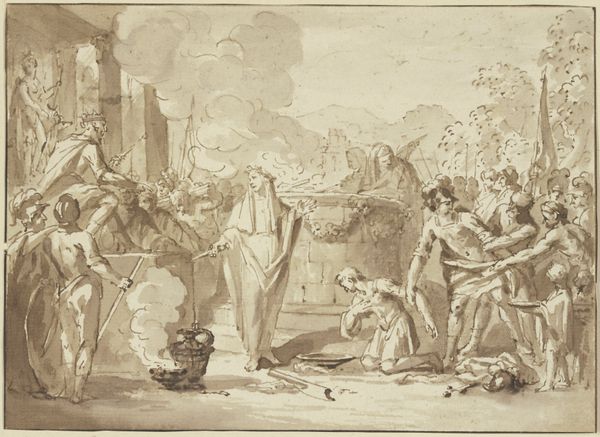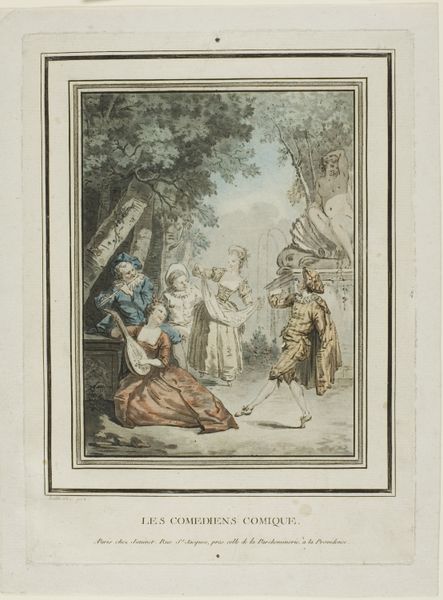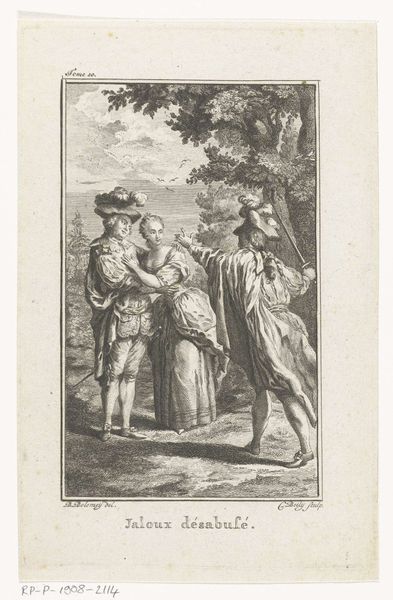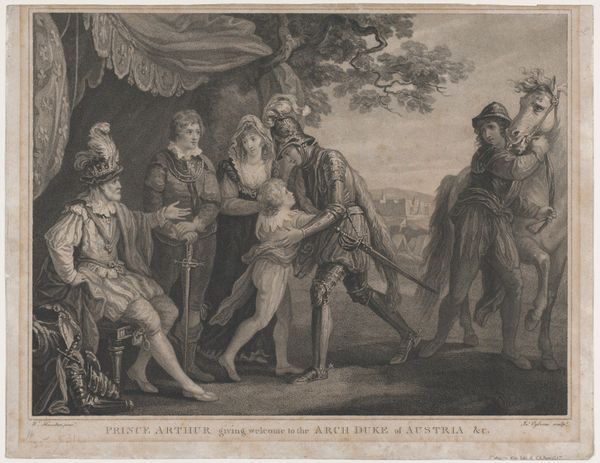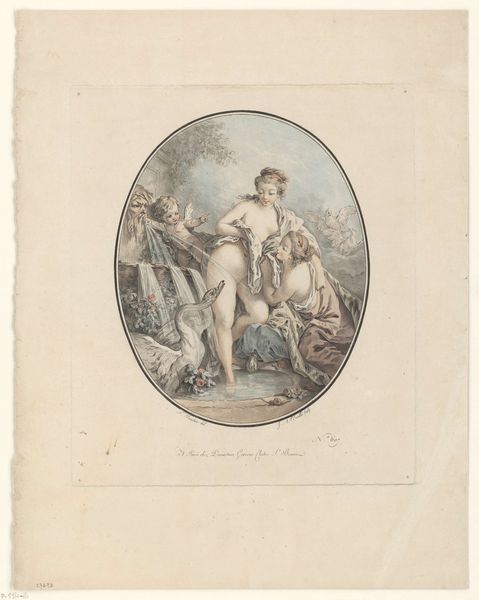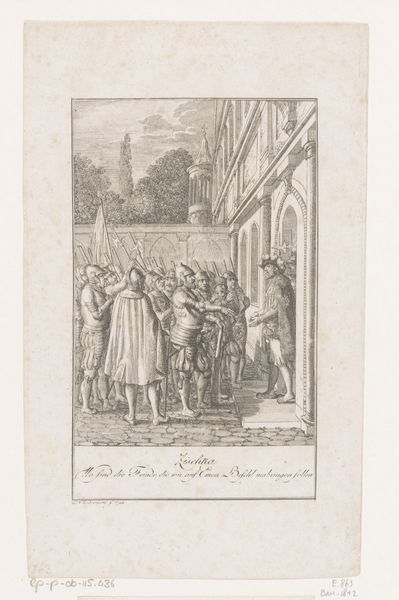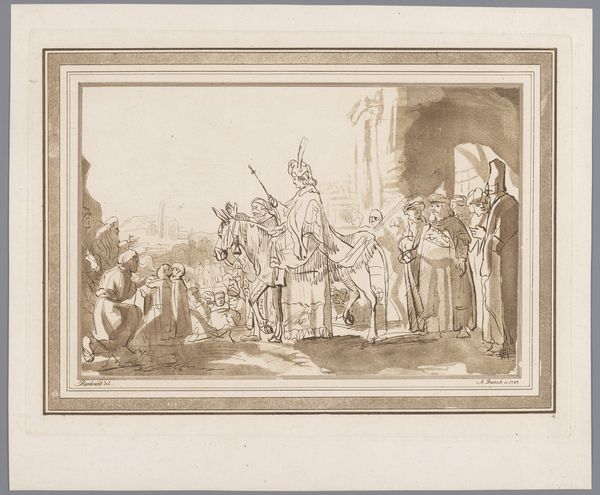
Sully at the Feet of Henri IV from a set of The History of France 1788 - 1792
0:00
0:00
Dimensions: 12 ft. 2 in. × 10 ft. (370.8 × 304.8 cm)
Copyright: Public Domain
Curator: This captivating textile piece, "Sully at the Feet of Henri IV," was created between 1788 and 1792 by Jean Jacques François Le Barbier. Editor: Immediately, I'm struck by the contrast in texture. The almost photographic detail in the figures against the slightly flatter rendition of the background trees. It really draws the eye to the human drama unfolding. Curator: Absolutely, the tapestry as a medium holds significant historical weight. Woven depictions such as this one from a series called "The History of France," would have served not only as decoration, but as tools of political narrative, reminding viewers of historical precedents. The subject matter – the presentation of Sully to Henri IV, highlights themes of loyalty and wise counsel that would have been understood through a socio-political lens. Editor: Indeed, the tapestry’s origin undoubtedly shaped its reception. The French court probably consumed art like this en masse. Think of the labor: the weavers, the dyes… Each stage of production imbued meaning before its exhibition context within royal halls, meant for nobles and visiting dignitaries. We see power dynamics reflected not just in the imagery, but in the very process of creation. Curator: Furthermore, the staging itself mimics history paintings, suggesting an equivalency between the power of images rendered with paint and woven. Consider the historical moment too. Created just prior to the revolution, it’s fair to read nostalgia for the Ancien Régime in these weavings. Editor: And in viewing them in a space like The Metropolitan Museum of Art, we are invited to think about that history. Tapestries, though ostensibly domestic items, entered into public discourse as the art became institutionalized. That history shifts our own understanding of craftsmanship. It makes the medium worthy of both domestic function and fine art display. Curator: That's a fascinating observation. The piece speaks volumes about the convergence of artistic practice and its historical representation within elite power structures. Editor: I concur. Analyzing tapestries—such a tactile art form—reveals so much about artistic intention as well as cultural perceptions of the past and their influence on future generations.
Comments
No comments
Be the first to comment and join the conversation on the ultimate creative platform.
